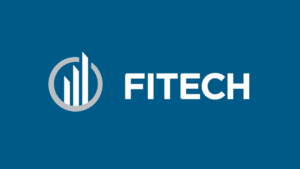Organizations today are faced with questions of how to migrate their data to private or public clouds safely, effectively, and affordably. This includes legacy applications which were developed over time, often purpose-built by software manufacturers (or custom developed in house), and scaled widely throughout the company. Depending on their architecture and length of deployment, they may or may not be able to be retrofit easily to make the move to the cloud.
Here are six key considerations for CIOs, CTOs and IT managers when migrating legacy applications to the cloud arises.
The cloud may lengthen the application’s life and combat EOL.
Tremendous problems can arise when a software manufacturer terminates an application rather than offer an upgrade path, and expects its client base to spend the money to convert to the new product. This is called “end of life” or EOL. EOL is a deadly term in the enterprise resource planning (ERP) world of business management software. These integrated applications are the lifeblood of the company’s finance, inventory and tax records. Without them, large businesses cannot run.
In many cases, significant time, expense, training and knowledge have been accumulated on a specific product or solution that works for a company. The company enjoys the operational efficiency gained through these applications and are not looking for new solutions. This efficiency is disrupted, however, when the software manufacturer suddenly decides to change its entire model and database structure, wreaking havoc for the end users that are happy and were not planning to make a big change.
The private cloud offers independence from software company EOL. When EOL strikes, the private cloud enables many EOL applications to continue providing the services a company needs, while also extending to users the updated capability to centrally operate via virtual desktops for those applications.
If the software fits your business, the new technology platforms can run it virtually. Plus, in spite of EOL, the manufacturer may continue to support the product; Microsoft supported Windows XP for 12 years after it stopped selling it, for example. In addition, third-party communities are formed in response to market needs, which ensure that technical support is readily available.
Cost savings potential: upgrade or convert to a cloud-based application? What about software that’s not providing its anticipated benefit?
When years and years of investment into an existing application have not netted the results expected out of ownership, it’s time for tough choices. Does the IT department simply trust that an upgrade to the newest version will deliver as promised or should there be significant investment in a new application?
At this point evaluation of the software, better known as “software selection” is the proper step. Companies need to take a step back and ask how the application performs vs. its competitors and question whether what was in place yesterday is still the right plan today. When you compare the cost to upgrade, in many cases it may be as much (or more) than a conversion to an alternate platform that better suits the needs of the organization today.
A private cloud expands users’ access the software.
If you have a client server application, the platform can be virtualized and extended to virtual desktops, effectively giving the same accessibility to the software as the new SaaS version. This is efficient in terms of financial and human resources; by utilizing the current platform there is no system down time, upgrade costs are minimized, complete network integration to the other functions is maintained, and only minimal staff training is required on the application’s new functionality.
Virtualization ends machine failure concerns.
Many older software programs are running on old servers or on desktops working as servers to support the software. If a hardware part fails, a major panic ensues as employees try to find that exact drive, board or part that might not even be manufactured anymore. There is no “ghost” or “image” of those systems and hardware failure can mean application death. By virtualizing the server software, all of this worry goes away. CTOs are no longer beholden to how hardware from the prior decade performs, or the massive impact that will occur should it die. Virtual desktops ensure consistency and do not require configuration changes since they mirror what already exists.
Backup woes are erased.
Older systems may have backup-related issues because backup “agents” are not available for that particular software or system package. In the private cloud, the entire virtual machine is backed up automatically and regularly, negating this issue.
Anywhere/anytime access on mobile devices.
The cloud has freed up software from running on that old PC in the office storage closet—and cloud-based applications allow mobile access to company files. Virtual desktops are available using apps on mobile devices (like x2, which allows for a Windows-based virtual desktop to run on Mac OS), so users can now run those legacy apps right on their tablets and smartphones as well as their desktops, which was impossible before deploying cloud computing.
In short, migrating key software to the cloud means convenience, flexibility, cost-savings and some freedom. Company techs must first determine if key software can be deployed in the cloud. If this migration is possible, there are powerful positives for companies. The organization does not have to invest in the software company’s new infrastructure (especially if all it does is add an unnecessary financial burden and disruption to a very efficient company and its key processes). CTOs and CIOs can take the time they need to explore software upgrades or new solutions on their own schedule, and rest assured that the company’s systems are backed up and accessible, without concern for system failure.

